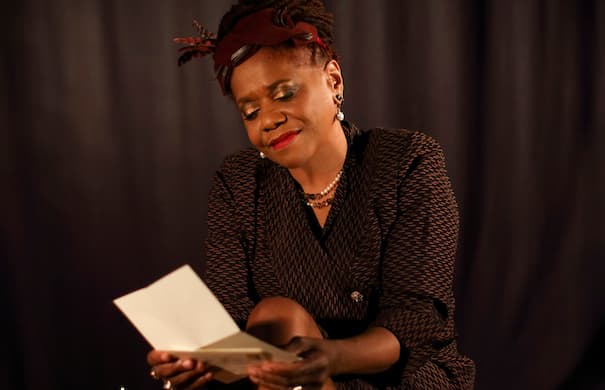The Jukebox Era Streams On Through the Work of the Great Catherine Russell
She is a major musical scholar and educator who is constantly looking for and finding that surprisingly rare song that everyone else has overlooked.

Catherine Russell
‘Send For Me’ (Dot-Time Records)
The jazz and blues singer Catherine Russell makes albums, but they almost sound more like they could be collections of singles — specifically, tracks that, in generations past, would be heard for a nickel a throw on a jukebox. From the Great Depression through at least the JFK era, jukeboxes were one of the dominant technologies of musical entertainment, and the labels were specifically producing specific sides strictly for “juke play” well before deejays spun records on the radio.
The classic jukebox sides usually featured a dominant, jazz-oriented vocalist (Mildred Bailey or Maxine Sullivan, to name two) surrounded by an agreeable complement of four rhythm players plus usually a trumpet or a reed soloist, sometimes a few additional horns. It was the juke medium that made stars out of both Fats Waller and Billie Holiday, among many others, and accelerated the rise of rhythm and blues in the 1940s. Those nickels added up.
Ms. Russell’s latest album, her eighth, is “Send For Me.” It covers a wide variety of material, from so-called jazz standards and the great American songbook to dixieland to ’50s R&B, yet all of it fits the jukebox format. Ms. Russell provides the central voice, and guitarist Matt Munisteri, her long-serving musical director, is joined by pianists Mark Shane and Sean Mason, bassist Tal Ronen, and drummer Mark McLean, as well as trumpeter Jon-Erik Kellso, trombonist John Allred, and multi-reed player Evan Arntzen.
Everything here is in a basic dance beat and, save for specific guest instrumentalists, with essentially the same band. One of her key strengths is that her music is somehow both diverse and consistent at the same time. The specific grooves here reflect different time periods, in multiple senses of the term: the dixieland pieces, like 1926’s “If I Could Be With You,” are in a traditional jazz two-beat, while 1930s numbers like “Did I Remember” (associated both with Holiday and Cary Grant) are in a swinging four. Earl King’s “You Can Fly High” is roughly the same groove as Ray Charles playing a twist circa 1962, while another Crescent City-oriented piece, Joe Liggins’s “Goin’ Back to New Orleans,” is driven by a slippery, Louisiana backbeat that I won’t even begin to describe. The latter also contains the sexiest use of the combination of banjo and tuba that I’ve ever heard.
Most bios of Ms. Russell are quick to inform us that she is to the manor born as far as this music goes: Her mother was the pioneering female bassist Carline Ray and her father was Luis Russell, a Panamanian pianist who came of musical age in New Orleans and collaborated frequently with Louis Armstrong — making her more than conversant with all of those musical idioms.
What isn’t noted as often as it should be is that Ms. Russell is a major musical scholar and educator (as are nearly all of her musicians and also her husband and manager, Paul Kahn) who is constantly looking for and finding that surprisingly rare song that everyone else has overlooked.
Some other personal highlights here are the title song, written by Ollie Jones of The Ravens but a major hit for Nat King Cole (his young daughters, Carole and Natalie Cole, had to vet it before he would record it), and “Blue and Sentimental,” which is essentially Count Basie and the great tenor saxophonist Herschel Evans’s reworking of a 1932 Victor Young tune called “Can’t We Talk It Over?”
While many contemporary musicians and singers exploring jazz’s past utilize the format of the theme album or songbook, Ms. Russell prefers merely to unearth one great song after another. “Send for Me” ranges from ur-standards like “East of the Sun” and “You Stepped Out of a Dream” (composer Nacio Herb Brown’s chords here have intrigued many a jazz modernist) to some songs that have essentially been recorded only once — to a few tunes so obscure even I had to look them up.
As always, Ms. Russell is by turns exuberant and mournful, jubilant and romantic, comic and erotic. She’s not only my favorite living blues artist but one of my top two or three jazz artists as well, constantly demonstrating the interconnectivity of those two musics, both to each other and to the larger world of social dancing.
Although I recommend buying the physical album — which is always more beneficial to the artist — you can still nonetheless stream it on Apple Music or Spotify for even less than a five cents a play.

